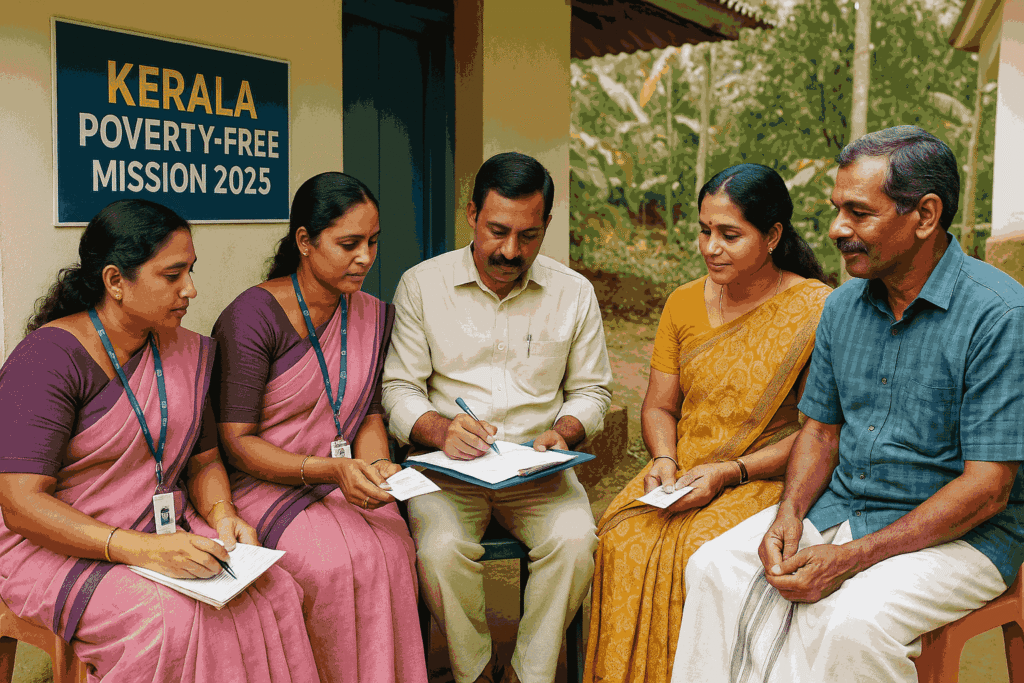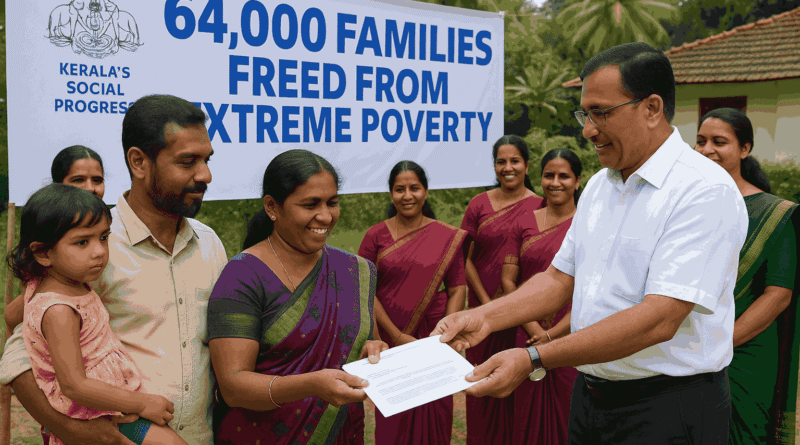Kerala’s Extreme Poverty Eradication Programme: A Path to Inclusive Human Development

Kerala charts a new model to ensure “Zero Extreme Poverty” by 2025 through community-led interventions
Public Headlines News Bureau | November 2025 | Thiruvananthapuram
Introduction: The Last Mile of Development
Kerala, long regarded as India’s social development pioneer, is now aiming for one of its most ambitious missions — the eradication of extreme poverty from the state.
The Extreme Poverty Eradication Programme (EPEP), launched under the Local Self Government Department (LSGD) in 2023, seeks to ensure that no household in the state lives without basic economic security, health access, and dignity by 2025.
Backed by Kerala’s globally recognized decentralised governance framework, the programme integrates social welfare schemes, digital data systems, and community participation through Kudumbashree and local panchayats — marking a milestone in the state’s journey toward inclusive human development.
The Vision: “No One Left Behind”
The EPEP is part of Kerala’s broader commitment to the Sustainable Development Goals (SDGs), especially SDG 1 — End Poverty in All Its Forms Everywhere.
Unlike traditional poverty alleviation programs focused on income or subsidy distribution, Kerala’s model takes a multidimensional approach, addressing the social, economic, and environmental factors that perpetuate deprivation.
“The mission is not merely to provide aid but to ensure self-reliance and social dignity for every household,” said M.B. Rajesh, Minister for Local Self-Government, announcing the programme.
The target: to make Kerala India’s first state to eliminate extreme poverty by 2025.
How the Programme Works
The Extreme Poverty Eradication Programme functions through a multi-layered local governance system, combining technology-driven identification with community-based support.
1. Identification of Households
- A statewide poverty mapping survey was conducted in 2023–24, led by Kudumbashree’s community network, to identify families living in extreme deprivation.
- Families were classified using nine deprivation indicators, including income, food security, housing, health, education, and social exclusion.
- The data is now integrated with the State Poverty Eradication Mission’s MIS platform to ensure real-time monitoring.
2. Local Governance & Panchayat Action Plans
Each Gram Panchayat and Urban Local Body prepared a Local Poverty Eradication Plan, prioritising identified families for intervention.
Through convergence with existing schemes — Life Mission, Asraya, Ayyankali Employment Guarantee Scheme (AUEGS), and Kudumbashree micro-enterprises — the programme delivers comprehensive assistance.
3. Kudumbashree as the Implementation Backbone
Kerala’s women-led self-help network, Kudumbashree, plays a central role in implementation.
Neighbourhood Groups (Ayalkoottams) conduct periodic home visits, ensuring that benefits such as food security, healthcare, and social inclusion reach every identified family.
“This is not charity — it’s social partnership,” says Bindu K., a Kudumbashree coordinator in Thrissur district.
“We track progress family by family, ensuring they move from vulnerability to empowerment.”
Key Components of the EPEP
| Component | Focus Area | Implementing Agency |
|---|---|---|
| Livelihood & Employment | Skill training, micro-enterprises, self-employment | Kudumbashree, K-DISC, Employment Dept. |
| Housing & Shelter Security | LIFE Mission housing for homeless families | LSGD & Housing Dept. |
| Food & Nutrition Security | Ration card coverage, mid-day meals, ICDS | Civil Supplies & Social Justice Dept. |
| Health & Sanitation | Ayushman Bharat, Arogya Kerala, Sanitation drives | Health Dept. & LSGD |
| Education & Digital Literacy | School enrolment, PMGDISHA, continuing education | Education Dept. & IT Mission |
| Social Inclusion & Rehabilitation | For elderly, disabled, and marginalised | Social Justice Dept. & Kudumbashree |

